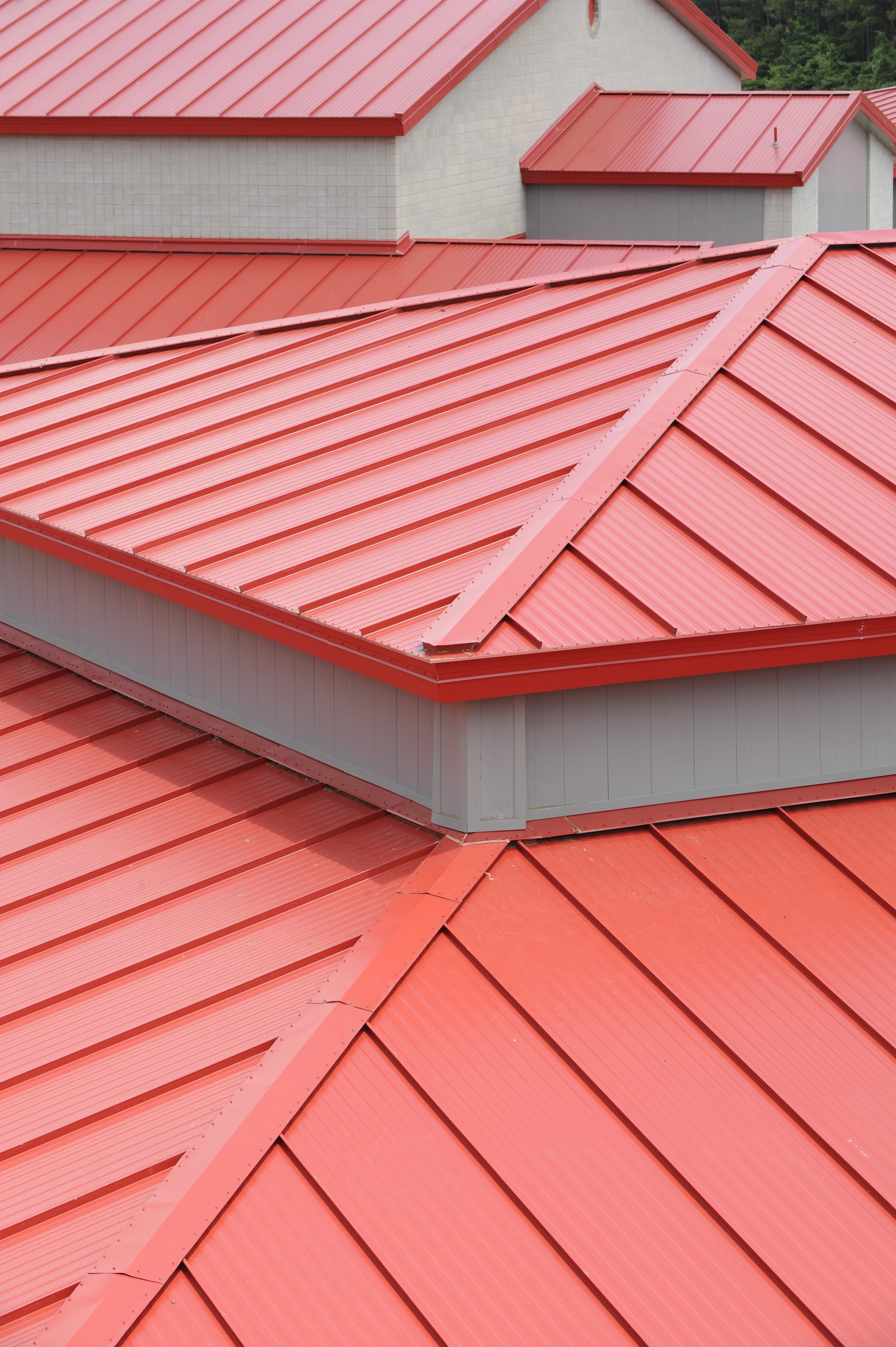More than 130,000 sf of Metl-Span CF36R insulated panels were utilized to re-roof the 8-building Haughton Middle School complex in Haughton, LA. The 2 ½ ft. panels were finished in Cool Bright Red and replaced a standing seam metal roof that was not performing properly.
“The old roof had been a problem for years,” said Lauren Marchive, project architect with Newman Marchive Carlisle, Inc., Shreveport, “and the Bossier Parish School Board wanted it gone.”
The design team researched three options:
- Removing the roof and installing decking with a new roof over it
- Using a single ply membrane system with insulation over the existing roof
- Removing the roof and installing an insulated metal panel system.
After consideration, the School Board determined the insulated metal panel system was the best solution. “Metl-Span was included in our bidding process and was the successful low bidder,” according to Marchive. “We had used Metl-Span roof and wall panels before on a Louisiana Department of Transportation building and the success of that project is what convinced us that this was a good option.”
Other factors that contributed to the selection of the Metl-Span system were thermal insulation qualities and the speed and ease of installation. “School remained in session during the renovation and it was important to minimize the disruption as much as possible,” Marchive said.
Installation of the Metl-Span panels was done by Louisiana Roofing Contractors, LLC, Bossier City, LA. “The biggest challenge was working around the school schedule,” according to Paul Tipton, owner. “We literally tore off the old and installed the new on a daily basis and made the roof watertight overnight, of course.”
The architectural design of the new roof was basically unchanged from the original. “There was quite a variety of different slopes to contend with and lots of details on the dormers,” according to Tipton. “But the system worked really well and achieved the design and performance everyone was looking for.” BD+C
Related Stories
| Nov 3, 2010
Dining center cooks up LEED Platinum rating
Students at Bowling Green State University in Ohio will be eating in a new LEED Platinum multiuse dining center next fall. The 30,000-sf McDonald Dining Center will have a 700-seat main dining room, a quick-service restaurant, retail space, and multiple areas for students to gather inside and out, including a fire pit and several patios—one of them on the rooftop.
| Nov 2, 2010
11 Tips for Breathing New Life into Old Office Spaces
A slowdown in new construction has firms focusing on office reconstruction and interior renovations. Three experts from Hixson Architecture Engineering Interiors offer 11 tips for office renovation success. Tip #1: Check the landscaping.
| Nov 2, 2010
Cypress Siding Helps Nature Center Look its Part
The Trinity River Audubon Center, which sits within a 6,000-acre forest just outside Dallas, utilizes sustainable materials that help the $12.5 million nature center fit its wooded setting and put it on a path to earning LEED Gold.
| Nov 2, 2010
A Look Back at the Navy’s First LEED Gold
Building Design+Construction takes a retrospective tour of a pace-setting LEED project.
| Nov 2, 2010
Wind Power, Windy City-style
Building-integrated wind turbines lend a futuristic look to a parking structure in Chicago’s trendy River North neighborhood. Only time will tell how much power the wind devices will generate.
| Nov 2, 2010
Energy Analysis No Longer a Luxury
Back in the halcyon days of 2006, energy analysis of building design and performance was a luxury. Sure, many forward-thinking AEC firms ran their designs through services such as Autodesk’s Green Building Studio and IES’s Virtual Environment, and some facility managers used Honeywell’s Energy Manager and other monitoring software. Today, however, knowing exactly how much energy your building will produce and use is survival of the fittest as energy costs and green design requirements demand precision.
| Nov 2, 2010
Yudelson: ‘If It Doesn’t Perform, It Can’t Be Green’
Jerry Yudelson, prolific author and veteran green building expert, challenges Building Teams to think big when it comes to controlling energy use and reducing carbon emissions in buildings.
| Nov 2, 2010
Historic changes to commercial building energy codes drive energy efficiency, emissions reductions
Revisions to the commercial section of the 2012 International Energy Conservation Code (IECC) represent the largest single-step efficiency increase in the history of the national, model energy. The changes mean that new and renovated buildings constructed in jurisdictions that follow the 2012 IECC will use 30% less energy than those built to current standards.
| Nov 1, 2010
Sustainable, mixed-income housing to revitalize community
The $41 million Arlington Grove mixed-use development in St. Louis is viewed as a major step in revitalizing the community. Developed by McCormack Baron Salazar with KAI Design & Build (architect, MEP, GC), the project will add 112 new and renovated mixed-income rental units (market rate, low-income, and public housing) totaling 162,000 sf, plus 5,000 sf of commercial/retail space.
| Nov 1, 2010
John Pearce: First thing I tell designers: Do your homework!
John Pearce, FAIA, University Architect at Duke University, Durham, N.C., tells BD+C’s Robert Cassidy about the school’s construction plans and sustainability efforts, how to land work at Duke, and why he’s proceeding with caution when it comes to BIM.
















